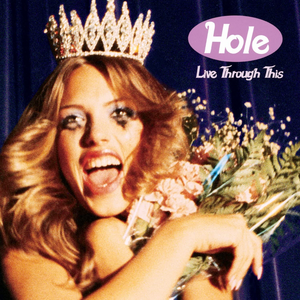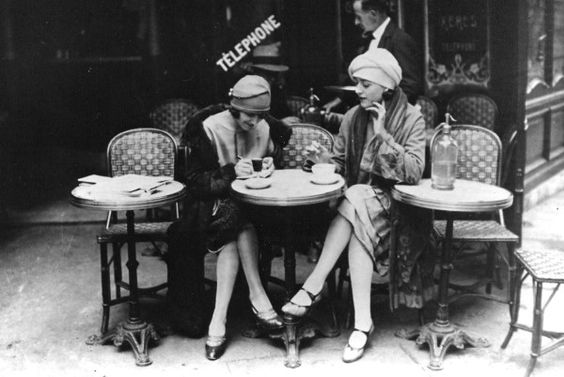International Women’s Day 2025: Looking Back Over a Century Ago

The theme of International Women’s Day (IWD) for March 8th, 2025 is “Accelerate Action for Gender Equality”. How can this be achieved? The IWD website highlights several key areas for action to accelerate gender equality. One important area is economic empowerment for women, and another is legal and policy reform. These areas are interconnected through labor rights, reproductive rights, and unpaid care work, among other issues. Looking back over a century ago, it was these same issues that prompted the need for an international day dedicated to women.
Key milestones in the history of the establishment of International Women’s Day (IWD) include the alleged all-women garment workers' strike in New York City on March 8th, 1857, which addressed demands for shorter working hours, better working conditions, and equal pay. Another significant event occurred on March 8th, 1908, when women workers in the needle trades marched through New York City. Although the historical validity of these two New York events in connection to IWD remains questionable, they continue to be cited in some narratives.
What can be validated is that in 1909, the Socialist Party of America organized the first National Women’s Day on February 28th. A year later, the idea of an International Women’s Day was proposed by Clara Zetkin at the Second International Socialist Women's Congress. Subsequently, the first IWD was observed on March 19th, 1911, in Austria, Denmark, Germany, and Switzerland. In 1921, Zetkin proposed that March 8th be the official date of IWD to commemorate the Petrograd women workers' strike on that day in 1917, an event marking the beginning of the Russian Revolution.
Zetkin, a renowned German socialist of the 20th century—often referred to as the mother of International Women’s Day—was not only a staunch advocate for women’s labor rights, but also recognized that women’s oppression was deeply connected to motherhood and unpaid domestic labor. Zetkin argued that the sexual division of labor, including women’s reproductive roles and domestic responsibilities, is a key source of inequality in the home, which, in turn, limited women’s full labor participation and hindered their full emancipation.
Zetkin advocated for child-rearing practices that are free from gender roles, emphasizing the importance of teaching domestic responsibilities to both boys and girls. She believed that raising and educating children should be the shared responsibility of both parents, not solely the mother's role. To enable both parents to participate fully in public life, Zetkin called for state intervention in domestic life, such as the provision of state-supported daycare.
Throughout history, IWD celebrations have spotlighted critical issues, including labor protections (such as equal pay for equal work, labor protection laws, and minimum wage standards); women’s political rights (the right to vote); equal access to education; and women's reproductive rights and protections for mothers and children (e.g., maternity leave and healthcare). Today, according to IWD 2025, accelerating gender equality includes promoting women’s economic empowerment through paid maternity and paternity leave, improved access to financial services for women, and the recognition, redistribution, and reduction of women’s unpaid care work. This includes advocating for flexible work policies and childcare support.
So here we are today with many of the same issues as a century ago.
In terms of policy reforms, there have been successes; however, the outcomes remain insufficient.
For example, Sweden is a pioneer in parental leave, introducing state-mandatory paternity leave as early as 1974. Decades of government initiatives in Sweden have narrowed gender inequality in the workplace, increased gender equality in childcare at home, and established Sweden as one of the world’s most egalitarian countries. Nevertheless, statistics reveal that women still perform a larger proportion of unpaid care work. In Sweden, women spend about 3.7 hours on unpaid care work (including housework), while men spend around 2.9 hours (OECD Stats, 2023).
Furthermore, while these policy reforms have advanced gender equality, they have not adequately addressed protection against gender-based violence.
Iceland, for example, has closed more than 90% of its gender gap through significant reforms in health, education, political empowerment, economic participation, and other sectors, earning its reputation as one of the safest countries in the world. Ironically, women are not safe inside the home. Data from 2023 reveals a concerning rise in domestic violence in Iceland over recent years (Statista, 2024). In fact, the country’s rate of gender-based violence surpasses the European Union (EU) average.
The IWD 2025 website highlights combating gender-based violence as a step toward accelerating gender equality. Ironically, the reality remains that even important advancements in gender equality have often fallen short of ensuring a safe environment for women.
While celebrating achievements and milestones is undoubtedly important, we also need to dedicate more time to reflecting on what is still not working. It’s discouraging that, over a century since the inception of International Women’s Day, we are still struggling with many of the same issues. Women have come a long way, but at times, we have been running in place. Unfortunately, this condition has been exacerbated in recent years by political changes that have created more challenges for gender equality.
-Some Thoughts from the Cappuccino Girl- (2025)
Updated on March 10th, 2025 to include explanation of key milestones
You might be interested to read: Remembering Rosa on May Day
Visit my other blog: https://feministpassion.blogspot.com/
#women #history #socialism #Germany #Russia #US
Image: Statute of Clara Zetkin in Leipzig (via Pinterest)
Sources:
Amnesty International (2009) Women make history. https://www.amnesty.org/en/latest/news/2009/02/mujeres-hacen-historia-20090227/ [7 March 2025].
BBC News (2024) Is Iceland the best place in the world to be a woman? https://youtu.be/h_y4xMOKWUM?si=Ehja0Pb25tikVKRs [21 December 2024].
Encyclopedia Britannica (n.d.) Why Is Women’s History Month Celebrated in March? https://www.britannica.com/story/why-is-womens-history-month-celebrated-in-march [8 March 2025].
International Women's Day (2025) What are some key ways to ACCELERATE ACTION for gender equality? https://www.internationalwomensday.com/Missions/20724/key-ways-to-ACCELERATE-ACTION [7 March 2025].
Johannes Kepler Universität Linz (n.d.) The History Behind March 8. JKU. https://www.jku.at/en/department-for-equality-equitable-opportunities-and-diversity/gender-diversity-management-unit/the-advancement-of-women-at-the-jku/march-8-international-womens-day/a-history-of-the-advancement-of-women/ [8 March 2025].
OECD Stats (2023) Time spent in paid and unpaid work, by sex. stats.oecd.org [18 December 2023].
Statista (2024) Number of domestic conflicts and violence in Iceland from 2015 to 2023. https://www.statista.com/statistics/1463279/number-of-domestic-violence-cases-in-iceland/ [22 December 2024].
The Hindu (2025) ‘International Women’s Day: when women marched for Bread and Roses.’ https://www.thehindu.com/news/international/international-womens-day-2025-history-of-womens-day-when-women-marched-for-bread-and-roses/article69302167.ece [8 March 2025].
POPULAR TOPICS
#subculture
Gurlesque: Poetics of the Bizarre, Ugly, and Feminine
#films
Mrs. Robinson, Countercultures, and Politics
#history
The Dutch Golden Age, Golden for Whom?
I also write articles here: https://feministpassion.blogspot.com/









